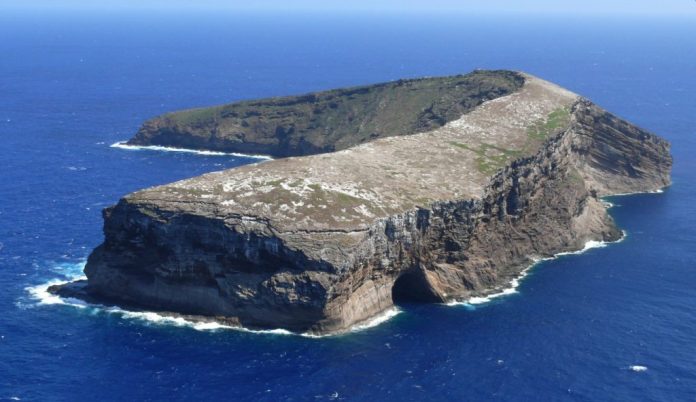Hawai‘i’s congressional delegation is calling on the US Navy to justify its proposal to more than double the number of non-explosive bombing and gunfire training exercises on Kaʻula, a remote islet southwest of Niʻihau that is home to tens of thousands of nesting seabirds and holds deep cultural significance for Native Hawaiians.
In a letter to Secretary of the Navy John Phelan sent last week, US Sens. Mazie Hirono and Brian Schatz, and US Reps. Jill Tokuda and Ed Case called on the military to complete a full environmental impact statement (EIS) and provide a clear national security rationale for the expanded training.
The delegation cited concerns over the Navy’s proposal to more than double the number of non-explosive bombing exercises at Kaʻula, from 12 to as many as 31 annually, as outlined in a 2024 draft Environmental Assessment (EA).
They argued that the EA did not sufficiently address the potential ecological and cultural harms of the training. They said a full EIS would assure the public of “an effective plan” that includes “allocating resources to environmental remediation on Ka’ula.”
Kaʻula, about 23 miles from Niʻihau, has been used for target practice since 1952. The Navy originally used live ordnance in hose exercises but discontinued that practice in the early 1980s. It is the last island in the Hawaiian chain still used for military target practice. To that end, conservationists, cultural practitioners and state officials have long objected to the continued use of the island for military exercises.
In 2024, Hawaiʻi Division of Forestry and Wildlife (DOFAW) Administrator David Smith called for an end to all bombing activity at Kaʻula, saying the practice was incompatible with its designation as a seabird sanctuary.
The islet provides nesting habitat for an estimated 18 species of seabirds, including black-footed albatross, and may become increasingly important as sea level rise threatens other nesting sites in the Pacific.
Kaʻula is also considered sacred in Hawaiian culture. According to oral histories, it is the birthplace of Kuhaimoana, the shark god, and an important marker for traditional Polynesian navigation. Critics of the Navy’s plan say bombing such a place is a desecration.
In their letter on Tuesday, Hawaiʻi’s congressional delegation acknowledged the importance of military readiness but said it must be balanced with community concerns and environmental responsibility.
“In Hawaiʻi, there is a significant level of mistrust with the Department of Defense as a whole, and the Navy in particular,” the delegation wrote. “As the Navy has now determined it would like to double the inert bombing and gunfire training it currently carries out on one of our smaller and uninhabited islands, we write to urge the Navy to provide more information about the impacts to Kaʻula to satisfy the concerns from Kauaʻi residents and the state writ large.
The delegation also emphasized the importance of transparency and accountability, calling on the Navy to explain how the increased training is justified given its potential impact on Kaʻula and surrounding areas.
“Too many pressing questions concerning the use of Kaʻula remain unanswered,” they wrote. “As part of a comprehensive EIS, the Navy must assure the public that it has an effective plan and will allocate resources to environmental remediation on Kaʻula. This will also allow the public to fully understand the impacts of this increased bombing on Kaʻula’s environment.”
A Navy spokesperson previously said the expanded exercises would occur only on the southern end of Kaʻula and would not have significant impacts on the environment or bird populations. But critics have pointed to the Navy’s legacy on other islands, including Kahoʻolawe, where decades of bombing left much of the land scarred and uncleared of unexploded ordnance.
The public comment period for the Navy’s EA closed in late 2024. A decision on whether to proceed with an EIS is expected in 2025.
The full text of the letter from Hawai‘i’s congressional delegation is available here.




